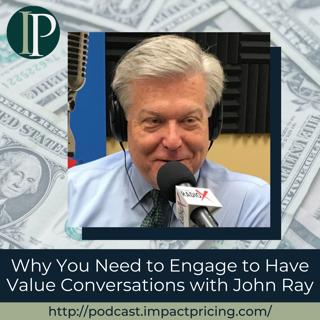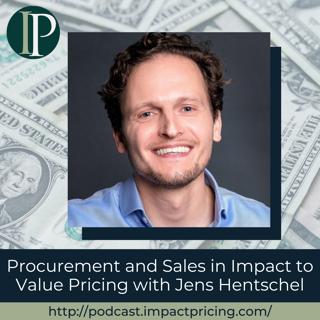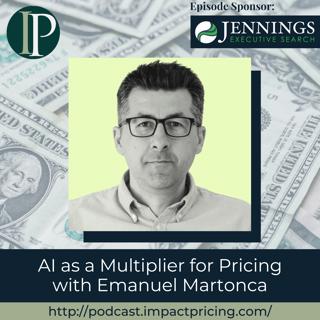
Pricing Table Topics: 4 of Clubs – Learn the Competitive Situation Before Negotiating
This one is the 4 of Clubs from the Selling Value card deck. It turns out that procurement people often lie to us. And it's their job, not necessarily to lie, but it's their job to get a better price. And what often happens is they'll say to you, "Hey, you're up against these other two or three competitors. In this situation, you have to lower your price if you expect to win this deal." And it turns out oftentimes that's not true. Oftentimes, you're not up against two or three different competitors. Back many, many years ago when I was in sales, I recall procurement people actually saying, "You're up against this other competitor." And it turns out the competitive product they were looking at wasn't even similar to the product that I was offering. And so, it was obvious to me that they were just lying. And in fact, I experienced this extremely clearly when I was on the buying situation. I was part of a committee and we'd chosen a software application that we wanted to purchase. And I was in the meeting when procurement said to the company that we were going to buy from, "You're up against these other two competitors, you better sharpen your pencil." And I knew for a fact that wasn't a true statement. So, please be careful and the way you know is, go back to the committee. Find out if the committee selected you or selected you as one of several different possible alternatives. We hope you enjoyed this example of Pricing Table Topics. What you just heard was done without a script. If you want to get better at speaking about pricing and value, grab a deck of our cards, pick a card, read the saying, and talk for one to two minutes about what that card says. You'll become a better speaker and expert. If you have any questions or feedback, please email me, mark@impactpricing.com. Now, go make an impact. Connect with Mark Stiving: Email: mark@impactpricing.com LinkedIn: https://www.linkedin.com/in/stiving/
28 Kesä 20232min

Why You Need to Engage to Have Value Conversations with John Ray
John Ray is a Pricing and Business Development Coach for Professional Services Firms, and a Podcast Host and Producer. In this episode, John shares optimal strategies for positioning your value proposition to attract the best fit clients for your business. What you will learn from this episode: Discover how to craft a compelling value proposition by identifying the unique value that your clients perceive in your offerings Learn about the importance of continuing value conversation Overcome the fear of pricing the value you provide to your clients "Develop your options around that client and let them choose. And you'll find out your pricing suddenly improves." - John Ray Topics Covered: 01:15 - How he got himself into pricing 02:10 - Who is his ideal client? 03:59 - Insights on solopreneurs making their business work even if they don't necessarily plan on being a business owner 05:28 - The feeling of fear and inadequacy in pricing in a lot of solopreneurs 06:11 - It's not all about expertise but the value you deliver 08:13 - Suggested value proposition to this case: Roger [the client] loves the fact that I calm him down when he gets notice in the mail, I'm trying to win some new business 09:01 - The importance of continuing value conversation 11:10 - One way to lead a value conversation and for people to dig deep with you 11:47 - Optimal win rate or rejection rate and the significance of having a value conversation 15:25 - Benefits of accepting all clients when you're just starting out [and advantages of niching] 18:42 - Turning the intangible value you have into a tangible range of values for the client 20:47 - Price effectively or end up costing your business 24:10 - John's thoughts on this: If I'm bidding and there's no competition or there is competition 26:11 - John's pricing advice Key Takeaways: "By definition you'll be getting better clients by that measure [35% win rate]." - John Ray "The great thing about a value conversation, it's a net that allows the great clients in that fits you well, and keeps out the ones that are not great fits." - John Ray "You don't lean on what you think you're worth, you lean on what the value that you've been able to uncover in that conversation." - John Ray People / Resources Mentioned: Ron Baker: https://impactpricing.com/?s=Ron+BAker Allan Weiss: https://alanweiss.com/shop/books/hardcover/value-based-fees-3rd-edition/ Connect with John Ray: LinkedIn: https://www.linkedin.com/in/johnray1/ Connect with Mark Stiving: LinkedIn: https://www.linkedin.com/in/stiving/ Email: mark@impactpricing.com
26 Kesä 202328min

Blogcast: What if They Find Out?
This is an Impact Pricing Blog published on May 18, 2023, turned into an audio podcast so you can listen on the go. Read Full Article Here: https://impactpricing.com/blog/what-if-they-find-out/ If you have any feedback, definitely send it. You can reach us at mark@impactpricing.com. Now, go make an impact. Connect with Mark Stiving: Email: mark@impactpricing.com LinkedIn: https://www.linkedin.com/in/stiving/
23 Kesä 20232min

Pricing Table Topics: 4 of Hearts – Gives and Gets
This one is the 4 of Hearts from the Selling Value card deck. This concept of asking for something anytime we're going to give a discount, we simply refer to it as gives and gets. We don't give anything without getting something. And so, what should we be getting when we're giving something? Well, surely we could get almost anything. What we really want to do is get the things that protect the profit of the company. And what are those things? If you think about all of the different items that you might be able to claw back from a customer. For example, it might be who pays for delivery. It might be how long the delivery takes. It might be when we schedule it. There's many, many different things we might be able to claw back. What we want to do is, think about how much does it cost us to deliver that thing to the customer so that if we claw it back, if we take that back from our customer, we're actually saving us costs on our side. Now, a couple quick thoughts. You know that, first off, I'm a pricing person, but in truth, we're thinking about how do we get the best margin for the company. And secondly, you've heard me say over and over again that costs don't matter to pricing, but costs do matter to profit. And if we're talking about a one-on-one situation and we have to give up some kind of discount, then let's try to get something in exchange that lowers our costs. We hope you enjoyed this example of Pricing Table Topics. What you just heard was done without a script. If you want to get better at speaking about pricing and value, grab a deck of our cards, pick a card, read the saying, then talk for one to two minutes about what that card says. You'll become a better speaker and expert. If you have any questions or feedback, please email me, mark@impactpricing.com. Now, go make an impact. Connect with Mark Stiving: Email: mark@impactpricing.com LinkedIn: https://www.linkedin.com/in/stiving/
21 Kesä 20232min

Drop Pilot's Game-Changing Pricing Strategies with Michael Hammersley
Michael Hammersley co-founded and invented a payment system designed to locate the market price of any consumer good. He authored the utility patent that protects the invention. In this episode, Michael discusses the platform he co-founded, a dual-sided marketplace of buyers and sellers that helps businesses reach a pricing competitive advantage. Why you've got to check out this podcast: Discover what Drop Pilot platform is Find out how it can benefit both sellers and buyers in determining the best price possible Learn to figure out the best pricing your customers are willing to pay "Find out what your customer is willing to pay before you sell them the product." - Michael Hammersley Topics Covered: 01:34 - How he started his career in pricing 02:21 - What's so interesting about analyzing pricing potential as a distressed fund 02:55 - Getting to know what Drop Pilot is and what dual-sided marketplace mean 04:00 - Is Drop Pilot a marketplace or research area and what benefit does this platform have for the sellers? 05:26 - What kinds of businesses work with them and what it means to have multi-unit transactions? 06:18 - Buyer's benefit in using Drop Pilot and explaining the research aspect of the platform 08:34 - Proprietary payment system's role in the marketplace and where his coaching focuses on in regard to the platform 11:01 - How to get people to bid with B2B businesses 12:56 - What is a Drop Day? 18:17 - Is the platform representing the real market? 19:11 - How the whole idea about Drop Pilot started and dealing with scalping issues 20:36 - Michael's best pricing advice that impact's one's business Key Takeaways: "We have a lot of repeat droppers who each time they come up with a new product, they'll come back, release it with us, figure out how to price it, and then sell it on their own website." - Michael Hammersley "If you want to figure out customer willingness to pay for a pricing tool, you really have to generate those numbers on your own based on estimations." - Michael Hammersley "If you want to look at the pricing analytics and you want to find out what your customers are willing to pay, it actually makes more sense to operate in a pressurized environment because you get the highest and best price." - Michael Hammersley "What you would want to do is take a look at the analytics and find the clusters of where the most bids came in like what the most common bid was, and then use that as a reference point to set your retail price." - Michael Hammersley "One thing that our algorithm or our platform actually does is it completely prevents the use of scalping bots." - Michael Hammersley Connect with Michael Hammersley: LinkedIn: https://www.linkedin.com/in/michael-r-hammersley-77285225b/ Connect with Mark Stiving: Email: mark@impactpricing.com LinkedIn: https://www.linkedin.com/in/stiving/
19 Kesä 202322min

Blogcast: Price Segmentation in TIOLI Markets
This is an Impact Pricing Blog published on May 11, 2023, turned into an audio podcast so you can listen on the go. Read Full Article Here: https://impactpricing.com/blog/price-segmentation-in-tioli-markets/ If you have any feedback, definitely send it. You can reach us at mark@impactpricing.com. Now, go make an impact. Connect with Mark Stiving: Email: mark@impactpricing.com LinkedIn: https://www.linkedin.com/in/stiving/
16 Kesä 20233min

Pricing Table Topics: 4 of Spades – Determine Purchasing Power Before Negotiating
This one is the 4 of Spades from the Selling Value card deck. Every time a salesperson gets in front of a procurement officer, a purchasing agent, however they're called, the purchasing agent will act price sensitive. Their job is to get a better price for their company. And so, they will always tell you that your price is too high, they need a discount. And you have to decide as a salesperson, do you want to give it to them? And here's the trick, does the purchasing agent actually have any power or authority to influence the decision process? If you're selling a commodity, and they could go to three, or four, or 10 different sources to get essentially the exact same thing, and those are all approved sources for the manufacturing capability, procurement has a lot of power. You need to do a great job at making sure procurement stays happy and figure out what it really takes to close that deal. On the other hand, if you're selling a piece of capital equipment and you've had a long sales cycle selling to a relatively large committee of people who've been debating, what's the best solution for us? And then they take that to procurement so the purchasing can go buy it. It turns out, procurement has almost no power. They'll pretend to have a lot of power, but they really don't. The decision was made by the committee. And so, we don't have to give big discounts to procurement in situations like that. Here's the problem, it takes guts. So, do you have the guts? We hope you enjoyed this example of Pricing Table Topics. What you just heard was done without a script. If you want to get better at speaking about pricing and value, grab a deck of our cards, pick a card, read the saying, and then talk for one to two minutes about what that card says. You'll become a better speaker and expert. If you have any questions or feedback, please email me, mark@impactpricing.com. Now, go make an impact. Connect with Mark Stiving: Email: mark@impactpricing.com LinkedIn: https://www.linkedin.com/in/stiving/
14 Kesä 20232min

Procurement and Sales in Impact to Value Pricing with Jens Hentschel
Jens Hentschel's passion is B2B relationship management and is especially interested in the interaction between the two sides at the negotiation table: buyers and sellers, suppliers and customers, sales and procurement professionals. In this episode, Jens delves into the role of procurement in guiding the internal stakeholder's buying journey on the supply side, while the sales professional assists in facilitating a value-based negotiation. Why you have to check out today's podcast: Gain a comprehensive understanding of procurement's involvement in the sales process using the direct and indirect spend terminologies Recognize the significance of involving procurement at the outset of the negotiation process Learn how procurement and sales can create a mutually beneficial scenario in pricing value "When you get into that situation where you have been put on the spot in that negotiation, don't budge on price." - Jens Hentschel Topics Covered: 01:16 - How he got into pricing 03:04 - Jens important thoughts about Mark's bad impression of procurement 07:27 - A case where it's all about price [on the procurement side] and not a win-win situation 11:12 - Understanding procurement's role in the sales process using the direct and indirect spent terms 15:00 - Why the need to involve procurement early on in the sales process 17:57 - Identifying the right procurement person and establishing the initial conversation 20:49 - A procurement's participation in the customer's buying journey 22:22 - Discussing the concept of supplies vendors list 25:00 - The role that price play in making it to the vendor's list 27:12 - Jens impactful pricing advice Key Takeaways: "What we are trying to preach is, involve them [procurement] right away because 90% of what your customers spend is managed through a procurement process." - Jens Hentschel "Something that I can only recommend to anybody to do is, interact with them [procurement] early, provide them with value insights that they're not able to gather themselves. That's how you start building that relationship." - Jens Hentschel "My thinking is, the procurement professional is the enabler of the buying journey of the internal stakeholder. And they can do it best by having a salesperson on the supplies helping them to be that facilitator." - Jens Hentschel "Where really value is created is where the sales professional on the supply side and the procurement professional on the customer side really work hand in hand to promote a solution." - Jens Hentschel Resources/ People Mentioned: Procter and Gamble: https://en.wikipedia.org/wiki/Procter_%26_Gamble Connect with Jens Hentschel: LinkedIn: https://www.linkedin.com/in/jenshentschel Website: https://www.fivis.io/ Connect with Mark Stiving: LinkedIn: https://www.linkedin.com/in/stiving/ Email: mark@impactpricing.com
12 Kesä 202329min






















